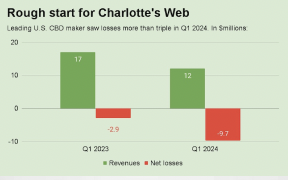Post-traumatic somatization disorder (PTSD LAWSUIT) is an intense fear that can be caused by a wide range of tragic incidents, including war – time battle, beatings, forms of cruelty, car wrecks, and hostile work environment, bullying, and discrimination. The extent of the damage, what other concussions are implicated in the assertion against the always group, and the accessibility of health coverage or other shapes of investments on the portion of the able to sue group all influence the future benefits of a particular instance. Each PTSD assertion is distinct, with its own set of elements that influence prospective settling estimates.
Which Is Post-traumatic Stress Disorder (PTSD)?
The National Institute of Mental Health defines post-traumatic stress disorder (PTSD) as “a disorder that evolves in some individuals after they have encountered a disturbing, scary, or risky event.” Individuals who have been through trauma will have a variety of responses, but the majority of them will begin to recover from their depressed mood. Others will tend to endure psychological pain, such as extremely stressed or frightened even when they are not in hazard, potentially leading to a Diagnosis of PTSD.
Like a result, with no need for a comprehensive scenario by an expert lawyer, the valuation of such instances is hard to calculate. Notwithstanding, we’ve supplied you with something like a list of factors that can help you figure out how much a case regarding the creation of post-traumatic symptom is worth. Simply notify our legal firm if you have any additional legal queries after perusing this essay. All discussions are complimentary.
Aspects to Consider When Valuing a PTSD Lawsuit
The intensity and scope of the harm that resulted in a “ptsd settlement” A scope and severity of harm are the most significant in determining the value of a case. PTSD victims frequently experience a slew of other cognitive and emotional issues, necessitating lengthy healthcare treatment and rehabilitation. Furthermore, PTSD victims may involve extended treatment, counselling, and prescribing drug treatment, all of which can cost hundreds of dollars per year.
Wage levels misplaced and earning potential lost in the process of refusal to function: In some cases, concussions such as emotional trauma, pain, mood disorders, or post-traumatic anxiety (PTSD) are so drastic that survivors are unable to come back to work for weeks, months, or perhaps even years after a stressful incident. Remuneration shavings and tax records could be used to calculate the sum of money lost due to inability to work. In settings where people will be unable to undertake the same gainful employment due to medical reasons or long-term psychological impact, profession experts are hired to determine the potential lost revenue.
Remuneration for Pain and Misery: Survivors of harm, such as psychological trauma, are entitled to damages for their pain and misery under legal system. In California, jury members use a per diem system to decide the quantity of compensation for pain and misery. For instance, if a judges determines that a people’s misery and anguish will last 600 days and the per diem (or per day) valuation of the pain and misery is $500 per day, the ruling will be positioned at $500 per day.
Then What Was The Difference Between Psychological Emotional Turmoil And Mental Anguish?
Psychological anguish and sentimental anguish circumstances don’t have a side effect list like PTSD, even though they’re psychological problems for which you can seek compensation focuses on the cognitive effect of your harm.
Mental anguish has no precise understanding, but signs might have (but are not limited to):
- Abnormalities of sleep
- Anxiety
- Depression
- Humiliation \ Grief
Journal entries or log of how you’re feeling each day if you’ve been in an accident that caused emotional distress. It can be valuable evidence in demonstrating how your injuries or the accident have affected your life.
Is It Possible To Charge For PTSD?
In a tort case, you can use PTSD as the grounds for a mental anguish assertion.
The plaintiff must show emotional pain by demonstrating that their severe feelings of anxiety, grief, or other bad feelings have tends to result in long-term consequences.
In most injury cases, the jury will first determine whether the person is guilty for the plaintiff’s physical injuries before moving on to the damages phase of the trial to address psychological injuries.
To recover damages, you must prove three essential elements, just like any other personal injury claim:
- A real injury occurred.
- The defendant’s negligence caused the injury.
- Fibromyalgia was the result of the injury.
Although PTSD is a significant trauma, psychiatric symptoms can be more hard to prove than physical injuries. When you have a broken bone, internal organ failure, or other actual injury, MRIs, X-rays, and other prognostics that actually demonstrate the nature and extent of the injury can be presented.
Emotional harm does not “show up” on a physical check. Experts may disagree about whether or not the patient has diagnosable PTSD. Your attorney will need to display strong evidence of behaviour that show you meet the PTSD requirements are defined.
Throughout Trial, Why Is PTSD Established?
In a court hearing, there are two types of eyewitness accounts: fact eyewitness accounts and legal experts. A reality testimony attests about their anecdotal experiences of what occurred in the case. An independent expert gives testimony about what they believe based on empirical evidence presented to them and their training and skills in their field of expertise. The average jury member is unqualified to determine whether or not a plaintiff suffers from PTSD. Expert testimony will be crucial for them. However, the expert cannot simply state – even under oath – that the plaintiff suffers from PTSD in order to persuade a jury. The expert must present evidence to the jury that explains why they believe what they believe.
Seeking Damages For PTSD As A Result Of A Workplace Accident
A work-related injury is generally covered by an employees’ monetary damages. Employees’ remuneration is designed to get no benefits to employees who are injured on the job. It also shields the employer from liability, implying that the claim will be paid by the company’s health coverage and that the injured worker will not be able to sue the company for their concussions. In some states, a PTSD claim may be covered by workers’ remuneration.
It’s critical to be cognizant of your government’s employees’ remuneration mandatory minimums. The limitation period in most nations starts to run whenever a harm is identified or when the individual should be takes place in the framework of the concussions existence. Because PTSD is defined by ongoing or long-lasting symptomatology, it can’t be identified until a certain amount of time has passed.
If you file a workers’ claim for damages for place of work PTSD, you may be eligible for health treatment, remuneration for permanent mental health impairment, lost wages, and any other benefits that would be available if you were injured on the job.
PTSD And The Effects Of An Automobile Accident
Even if you were not physically injured, a car accident can be a traumatic experience. A person who was not injured in an accident but witnessed injury to others may develop PTSD. If you have PTSD as a result of witnessing a family member’s death in an accident, you may be able to file a wrongful death lawsuit.

















